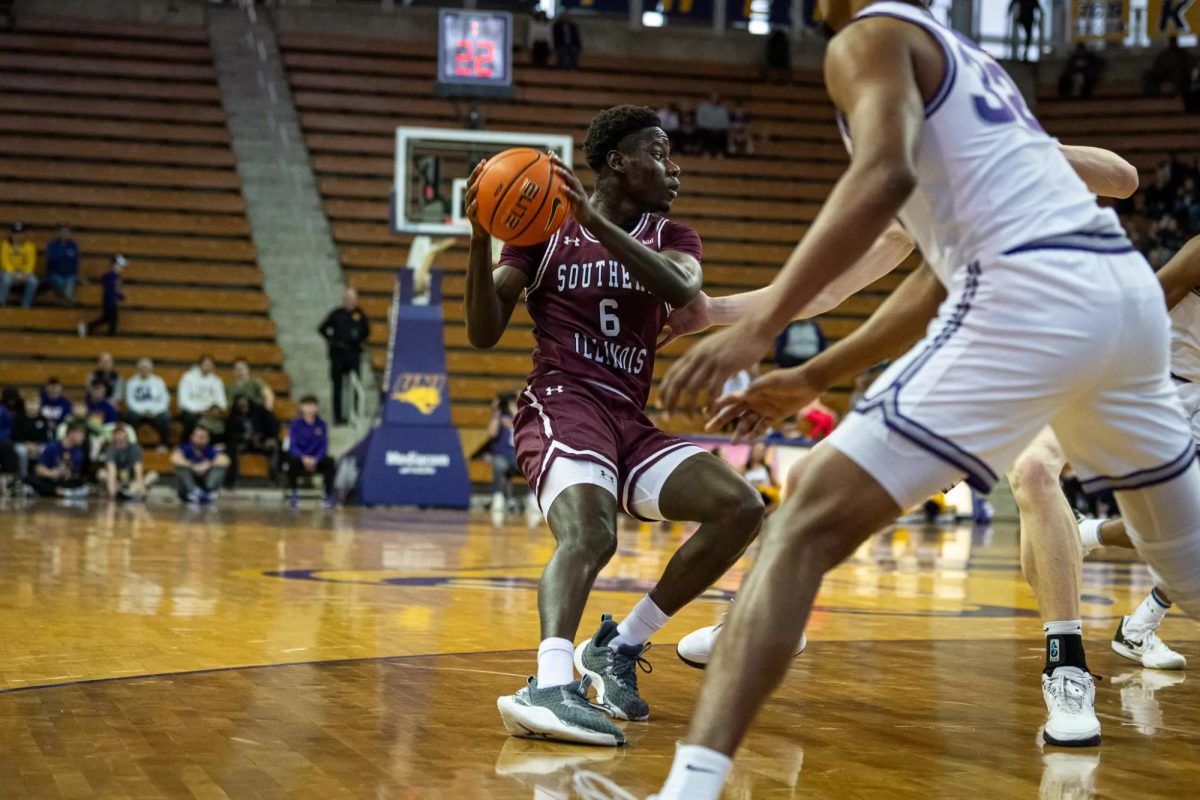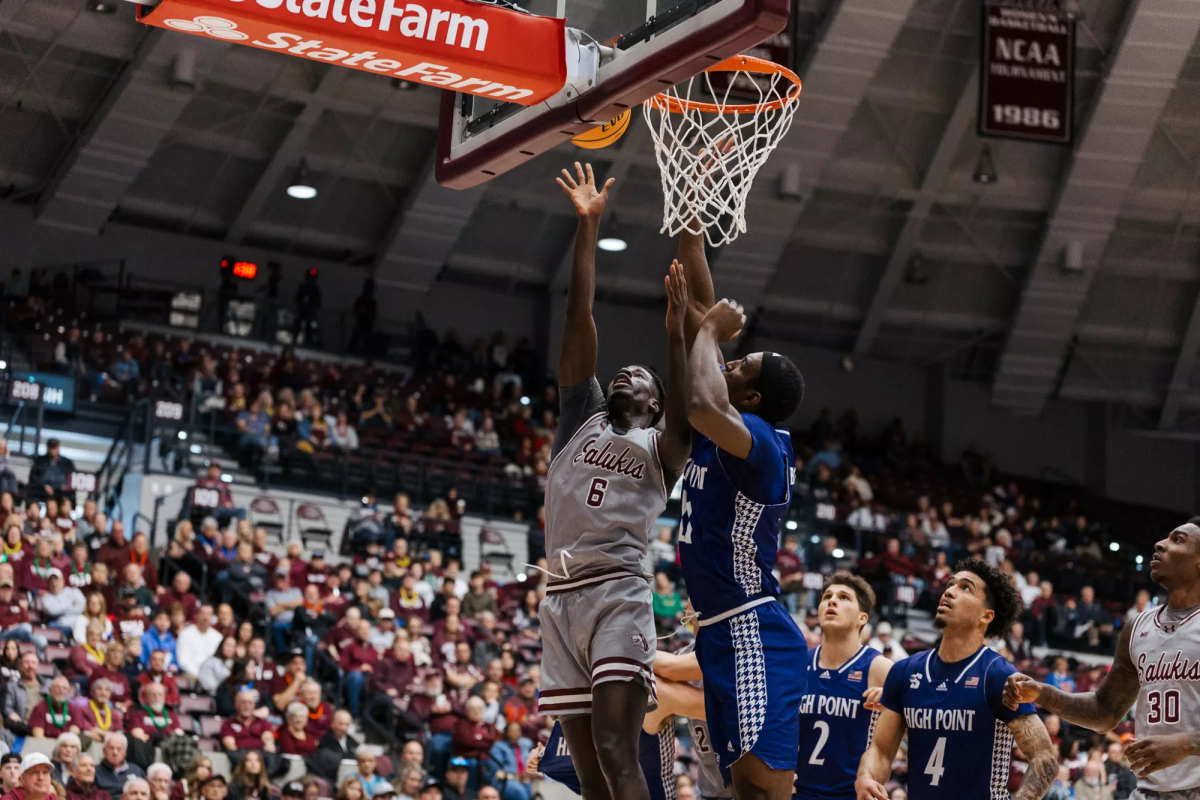Do benefits — like teamwork, fun and glory — outweigh safety concerns in football?

(DailyEgyptian.com file photo)
August 26, 2016
The memory is a lasting one.
For the fan, coach or bystander, watching as a player is carted off the playing surface can be a tough experience. Watching as a kid wobbles back to the sideline after a big hit is hard to forget.
“That’s the last thing you want to see,” West Carroll athletic director Joe Hansen said. “But you remember that kind of stuff.”
Advertisement
For the player, the moments after an injury can be confusing. Questions like how serious, what just happened, and how long will I be out, race through the player’s head.
During Week 1 last season, Rock Falls senior tight end Keegan Doering was taken via ambulance to CGH Medical Center after breaking two bones in his left leg. Players on the field took a knee. Those on the sideline didn’t speak. The injury required surgery, and he was done for the season.
A few quarters of football, only to be out of commission for the rest of the fall is a tough pill to swallow after a routine play.
Injuries like this happen every week across Illinois. Injuries like this happen so often in football, it becomes the norm.
Some are more obvious, like broken bones, while others — like concussions — are tricky to diagnose, treat and heal.
So while the country prepares for yet another football season filled with violent collisions, the question ‘Is it worth it’ is asked.
Do safety concerns outweigh the benefits of playing football?
Advertisement*
“Football is something I couldn’t imagine not playing,” Oregon’s Caleb Mennen said. “As a guy who carries the football, you know you’re going to get hit on just about every play. It’s part of the game. You might get injured, but you also get to play the best team sport with your friends in front of everybody.”
Mennen is on the preseason all-area team, and is hoping for a big season. For kids like this, the answer is a resounding “yes.”
For others, however, like Hawks teammate Caid Chenoweth, his reasons for playing are a bit murkier.
Chenoweth suffered three concussions in three consecutive weeks that ended his sophomore sason. His junior season came to an end before it started with a torn ACL in his right knee.
But he’s back on the field for Oregon, hoping to win a starting role. He said his mother was wary about him returning to the field after the knee injury, and doctors kept him out after the concussions.
He certainly doesn’t want another injury, but Chenoweth decided that playing football his senior year was worth it to him.
“That’s the thing about this sport,” he said. “You can’t think about getting hurt. You have to play with that out of your mind. For most of us, high school is the only time you get to play the sports you love, so it’s worth it.
“I love being out there with my team, competing for a common goal. But I’m done after this season. I want to live the rest of my life healthy and uninjured.”
Schools have handled injuries in various ways.
All schools have to have at least one trainer on the sideline for games that have completed at least 2 hours of concussion training. This comes from the law SB 07 that Illinois Governor Bruce Rauner signed into law on Aug. 3, 2015.
The legislation also makes it a requirement for high schools to provide education materials about concussions to their coaches and athletes. But schools found out that providing educational material can only go so far.
In baseball, the IHSA played its baseball seasons with recommendations for pitch counts for pitchers. Many coaches blew past those and managed how they saw fit.
Football doesn’t have a set rule on how to handle concussions. No sitting out a certain number of weeks or games, but instead that determination is left up to the trainers.
SB 07 also states that “teams can contain a range of individuals based on the resources available to the school in their community or neighborhood, but must include one person who is responsible for implementing and complying with the return-to-play and return-to-learn protocols.”
What this means is that schools have to only comply with the minimum, but are allowed to take any further steps. Some do, while others don’t. Others might not be able to afford anything but the minimum.
This summer, Sterling conducted pre-concussion baseline tests. Athletic trainer Andi Sumerfeldt performs the baseline testing every two years.
This year it was the freshman and junior classes. The tests are only required every two years, as the answers won’t change much.
Elsewhere, Dixon did baseline testing as well, and West Carroll hired the Monroe Clinic for the first time to perform ImPact testing, a computer-based program to help better determine severity of a concussion, as well as helping to properly diagnose one.
Hansen saw the benefits of the testing at his previous stops as a coach, and wanted to bring that here.
“I found that parents want to be more informed and have all the tools,” Hansen said. “The parents, and the kids too, also want to know that when they come back, they aren’t coming back too soon.
“This is something I plan on doing every year. Hopefully more kids show up, and this will catch on to a lot of students.”
___
(c) 2016 the Daily Gazette (Sterling, Ill.)
Visit the Daily Gazette (Sterling, Ill.) at www.saukvalley.com
Distributed by Tribune Content Agency, LLC.
Advertisement







